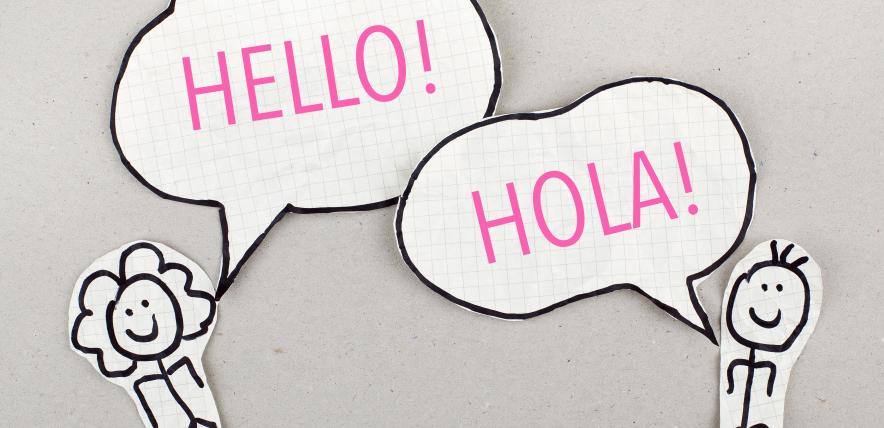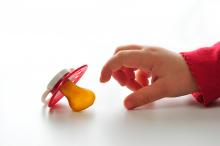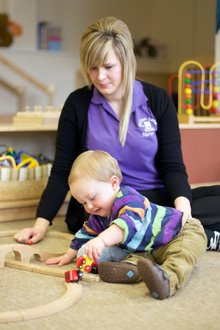Is speaking to our child in different languages too confusing and will it hinder their development?
Knowledge of two languages – bilingualism, or more than two languages – multilingualism are becoming increasingly common in the UK.
While the British may have an international reputation for being relatively limited with languages, the reality is quite different. Immigration to Britain has made us more linguistically diverse with many different languages spoken in homes, in addition to English.
What are the benefits of raising a multilingual child?
Research has suggested that raising a child as multilingual may have a number of advantages, and this far outweighs the possibility that in the very early stages a child may not appear to be fluent in each language.
While multilingual children may, in some cases, begin to speak later than their peers, they soon catch up and the benefits of knowing additional languages far outweigh any minor disadvantages as the child progresses through school.
Studies carried out on Canadian children who are bilingual in English and French, for example, showed that these youngsters were better able to concentrate and less likely to be distracted from a task than their monolingual peers.
These children were also more creative and better at problem-solving. The benefits continued into adulthood. Multilingual people were found to earn more money (although this will, of course, depend on how widely used and in demand both languages are), and experienced less aging of the brain as they grew older, the study found.
Barbara Zurer Pearson, who has written books on raising multilingual children, says babies can tell the difference between language sounds just days after birth, especially if these languages differ greatly from each other, such as German and Arabic.
Previously, and partly due to poorly-designed studies on the subject, it was believed that as children grew older, they might be confused by hearing more than one language at home, and parents were urged to speak to them only in English. This theory has since been disproved.
While children are learning a new language, it may sometimes sound as though they are mixing or confusing two or more languages as they learn them. This is a language-learning stage where a child switches between languages, picking which word or phrase feels right for the situation. This is a temporary phase and as they grow older, they will start to ‘sort out’ which language is which and may become more proficient in one than the other, particularly if they use one language more in their everyday life.
When should we start speaking to our child in multiple languages?
There is no right or wrong time to start helping your child learn an additional language, but the earlier you can do this, the better.
This doesn’t mean that your child will just pick up Spanish by watching cartoons in Spanish. But it is generally accepted that between birth and seven-years, children’s minds are more open and flexible, which makes them extremely receptive to learning new things.
Children raised in a multilingual home may also have the advantage of being able to put each language on a parallel path, meaning that they are learning multiple languages separately, but at the same time.
As a parent or carer, you will need to speak to them daily in each language; the more relevant the language is to their everyday lives, the more likely they are to pick it up quickly and easily, so using it for general conversation at home is a good way to get started.
Use the language you know best with your child and use it in your home. It may be that you use your native language at home and your early years setting interacts with your child in English. It could be that you and your partner speak two different languages and use them interchangeably in the home. Perhaps one parent speaks one language exclusively and the other uses both. There are different choices, but consistency is key here. Always use the language you know best with your child.
Barbara says: “We hear about the special 'window of opportunity' for young children to learn two languages, which can be discouraging to the older child. It's true that it's easier to start earlier, but people can learn a second language at any age.”
Speaking from experience
Irena Nowak is a parent raising her three-year-old daughter, Kasia, to be bilingual in English and Polish.
“I speak to her in Polish when her English father is at work, and then we revert to English when we’re together as a family,” she explains.
“I know from my own experience of speaking four European languages that knowledge of one or more makes the learning of each new language that little bit easier, because you begin to pick out the root words and similarities.
“If you speak a different language, it costs nothing more than a little bit of effort to pass that on to your child to give them a useful skill in life.”
As Irena points out, if you already have the knowledge of a second language, helping your child to learn both their native language as well as the additional second language can have many benefits.
Multilingualism can enable children to communicate with members of their extended family and their wider communities, it provides children with another way of looking at the world and access to important aspects of culture – such as books, poems, TV programmes, and plays – and recent research has suggested that multilingualism may also have cognitive advantages.
Ten top tips for parents and carers raising multilingual children
To help support your child successfully to becoming multilingual it is helpful to:
- Work towards a clear understanding between yourselves and your child’s key person if attending an early years setting as to your approach to your child’s multilingual.
- Ensure the early years setting values your home language as your child’s first language.
- Stick to speaking your community’s language at home or in social and wider family situations as far as possible – a strong first language is a firm foundation for a second language to be built on.
- Speak to your child in your home language when you are settling her or him into the early years setting. This helps him or her to understand unfamiliar objects or activities, know where things are or what will happen next.
- Make sure he or she is confident to be left with their key person and can communicate his or her needs.
- Ensure staff know some essential words in your language and have them written down to show how they are pronounced.
- Share information with your child’s key person about your child’s language development at home, to see how he or she is progressing in each language.
- Provide opportunities for your child to make friends with other children who speak the same language. This helps maintain your language as well as help children learn about their culture.
- Reply to your child in your home language, not English when they speak to you in English - but don’t correct them or try to force them to use your language – be as natural as you can be.
- Work with your child's early years setting to have shared activities that you can do with your child at home such as through book bags or story sacks, so that your child can develop similar vocabulary in each language.
Further information
Speaking-mind-links-languages-skills/
Raising-a-bilingual-child-the-top-five-myths
Bilingual babies and speaking multiple languages at home
Written for the Early Years Alliance by Dorothy Lepkowska.
This article was first posted in October 2016. It was refreshed and had the Top 10 Tips added to it on Tuesday 26 February 2019, and was updated again on 9 May 2023.







